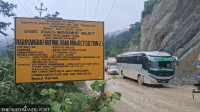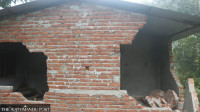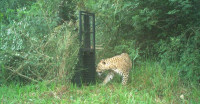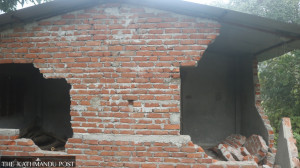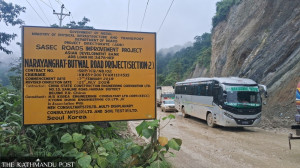Lumbini Province
Lumbini avoids UNESCO danger list
Citing progress in preservation, the World Heritage Committee has granted a year’s reprieve and plans a monitoring mission to assess the condition of Buddha’s birthplace.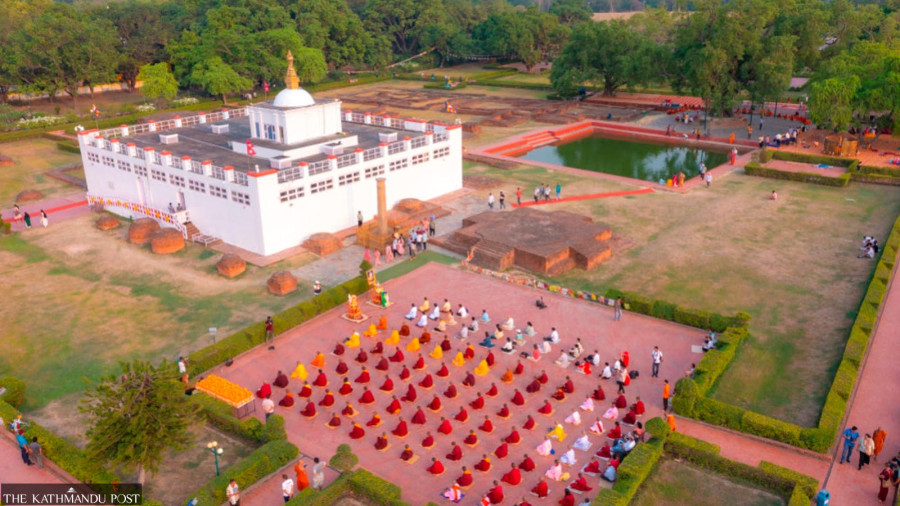
Manoj Paudel
Lumbini, the birthplace of the Buddha and a UNESCO World Heritage Site, has been spared inclusion on the List of World Heritage in Danger after the World Heritage Committee acknowledged Nepal’s ongoing conservation and improvement efforts.
The decision was made during the 47th session of the UNESCO World Heritage Committee, held in Paris on Thursday which was chaired by Bulgarian professor Nikolay Nenov.
The committee decided not to place Lumbini on the danger list for one year, but will dispatch a reactive monitoring mission to evaluate the site’s current condition.
UNESCO describes reactive monitoring as the process of reporting on the state of conservation of World Heritage properties that are under threat. According to Paragraph 169 of its Operational Guidelines, it is part of the procedure used to assess whether sites should be placed on the List of World Heritage in Danger or removed from the World Heritage List.
The decision to defer inclusion came after discussions recognised conservation-friendly and reformative steps taken. Based on the findings of the upcoming monitoring mission, the committee will later decide whether Lumbini should be reconsidered for the danger list, said Gyanin Rai, senior director at the Lumbini Development Trust, who attended the session.
Lumbini had been placed on the tentative danger list in 2024 following concerns raised in a 2022 monitoring report prepared by heritage experts Roland Lin Chih-Hung and Professor Yuga Kariya, who were deployed to the site by the World Heritage Centre and International Council on Monuments and Sites (Icomos).
Discussions took place at the 46th session held in Delhi last year on whether Lumbini should be added to the danger list. At that time, an amendment proposal submitted by India resulted in Lumbini avoiding the listing.
However, Nepal’s proposals, concerns, and suggestions regarding Lumbini were acknowledged, and a 12-point decision and directive were sent via the Nepali Embassy in France.
Sanuraja Shakya, member-secretary of the Lumbini Development Trust, said Nepal had acted on all 12 points—covering conservation, legal clarity, and policy formulation—and submitted a Standard Operating Procedure (SOP) report that yielded a favourable outcome. “We addressed everything comprehensively,” he said. “This has yielded good results. We will continue with conservation-focused work.”
Officials said UNESCO responded positively to Nepal’s adoption of an integrated management framework and sector-specific strategies aimed at protecting and managing Lumbini’s heritage. The five-sector strategies cover archaeology, visitor management, natural disasters, local development, and engagement with the Buddhist community.
The framework also serves as a broad guiding policy, while the sector strategies provide detailed operational plans. Additional efforts include conservation work on the Ashoka Pillar, Marker Stone, and Nativity Sculptures using new technology to prevent seepage and maintain cleanliness—the moves that UNESCO welcomed.
Upgrades to the Maya Devi Temple included painting walls, installation of fans, lighting, and electricity.
UNESCO had earlier urged Nepal to prepare a comprehensive, focused, and results-oriented plan to keep Lumbini off the danger list.
Effective on-site implementation—beyond written commitments—resulted in the current positive decision, said Rai.
“To keep Lumbini off the danger list, we invited global heritage experts and hosted the World Heritage International Conference, which proved highly impactful,” Rai said.
Shakya added that Nepal thoroughly studied UNESCO’s past recommendations to understand points of concern and submitted a detailed State of Conservation (SOC) report.
The preparation involved close coordination with national and international experts, ministries, and the Department of Archaeology, he said.
The 47th session of the UNESCO World Heritage Committee runs in Paris from July 6 to 16.
UNESCO enlisted Lumbini in the World Heritage List in 1997. The UN body has repeatedly expressed concerns regarding human activities and the construction of various structures in the Lumbini area.
The extended 45th session of the World Heritage Committee, held in Riyadh, Saudi Arabia, from September 10-25, 2023, sought clarification from the trust.
Accordingly, the World Heritage Committee wrote a 10-point letter seeking clarification before February 1, 2024. The trust replied to the World Heritage Committee before the set deadline.
The UN agency expressed concern about the construction of an assembly hall and other structures in the area.




 16.2°C Kathmandu
16.2°C Kathmandu
